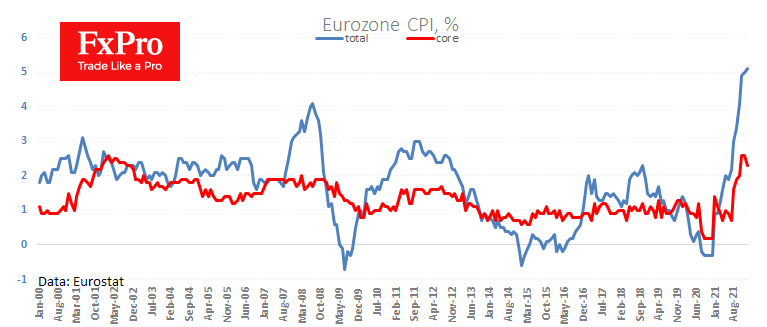The US manufacturing ISM, an essential indicator for America's business cycle, recorded a significant slowdown in January but managed to beat expectations. It had declined from 58.7 to 57.6 against expectations of 57.4.
The manufacturing ISM has slipped in the last two months from near 60, where it has held for most of last year, which coincides with the start of the Fed's QE rollback. It will be interesting to see if the rate hike that the markets and businesses expect as early as March leads to a short-term downturn in business activity.
Perhaps the Fed is deliberately seeking to cool the economy to slow inflation. But the interim results are highly questionable. The price component jumped from 68.2 to 76.1 last month. Falling manufacturing activity (from 59.4 to 57.8) and new orders (from 61.0 to 57.9) drove the index down.
The ISM release might be the first wake-up call that the process of suppressing inflation will suppress the economy first.
Above Expectations CPI Pushes Euro Higher
In Europe, inflation accelerates, contrary to forecasts that the peak has passed. First estimates just released noted an acceleration in CPI from 5.0% to 5.1% y/y against average estimates of a slowdown to 4.4%.
An inflation rate creeping above 5% might wake the ECB from its slumber and put a suppression of inflation on its agenda, following such peers as the Fed and the Bank of England.
We must say that the ECB has enormous potential for advancement on this issue. Right now, the markets are laying down a slight chance of one rate hike before the end of the year, while the regulator's representatives so far remain in the position that there will be no hikes this year.
On the hawkish stance of the Fed, EUR/USD fell to 1.1122 at the end of January. However, the pair moved above 1.1300 on German and Eurozone inflation data.
With the higher inflation, there are growing expectations that the ECB will make an equally sharp U-turn to suppress inflation as the Fed have. We might hear more about that tomorrow after the next meeting, and then the euro recovery could be on firmer footing.



